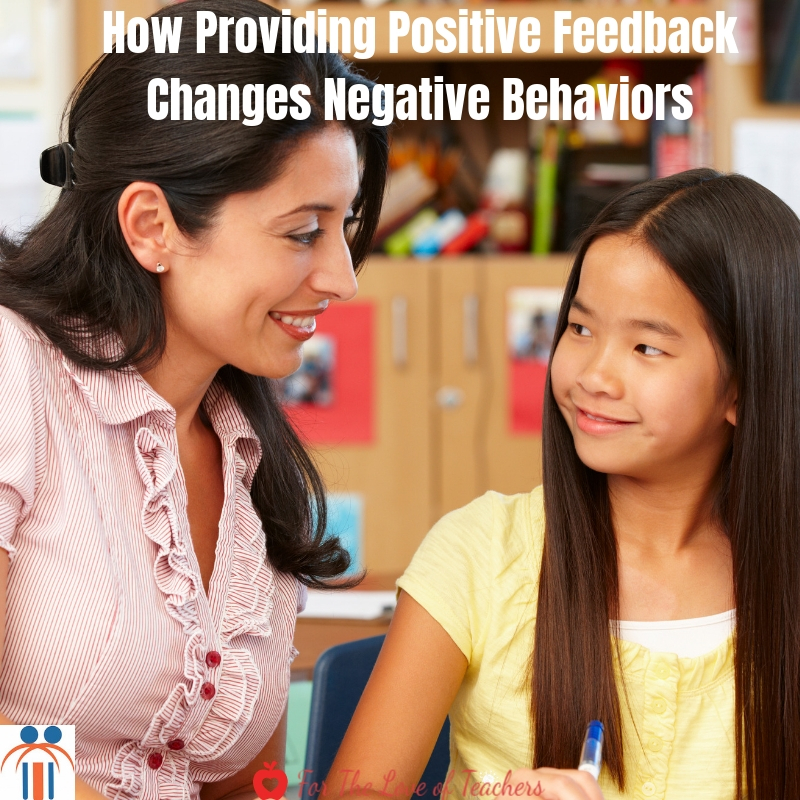Have you ever thought or felt that some children misbehave because they want to, perhaps they can’t control it, or just want to tick you off? Sometimes this seems like the case, but much research shows that children do not have an agenda for acting out and they do not go out of their way to misbehave. Actually, children want to behave well and do not want to feel bad or make others feel bad either. Whether at home or school, children will demonstrate negative behaviors. As a teacher and/or a parent, it’s how we deal with negative behavior by providing positive feedback that can change those pesky negative behaviors into positive ones.
My son started flexing his muscles a bit more in the past 2 years, just about the time his baby brother came along. Of course, he had all of the attention for nearly five and a half years so Mr. I Don’t Get Enough Attention let us know with some impressive attention-seeking behavior. He began challenging the rules, back-talking and became just downright disobedient. My initial reaction to this negative behavior was to punish him, fight back, and flex my even bigger Mom muscles because I’m the “MOM” and “I said so.” Well, I’ll tell ya firsthand that this doesn’t work. It doesn’t change or fix negative behaviors. What it does is hurt relationships, cause power struggles, and result in more negative behaviors.
Now in my classroom, it was a totally different story. I studied early childhood and I was trained in the Responsive Classroom philosophy, which focuses on meeting the needs of the whole child, socially, emotionally, and academically. My rules, routines, and expectations were clear and consistent. Sure, I had some challenging students who demonstrated negative behavior, but for the most part, after I nurtured student-teacher relationships, I had it under control and my students were “obedient.” I felt like a classroom management rock star! Now after becoming a parent, I always thought I had the right tools and strategies under my belt to know exactly what to say and do if this ever became a problem with my own children, sadly my husband did too. 😉 But for some reason, my strategies didn’t seem to work on my own child. I was frustrated and thought why can I manage a classroom of other people’s children but I can’t manage my own?
I felt like a failure.
So I went back to the books and read and read, researching strong-willed children and oppositional defiant disorder. I took online parenting courses, and talked with other teachers and friends to get advice, strategies, and opinions, and I’ve concluded with this: you can’t make negative behavior go away by trying to be more powerful or making the child feel worse. You make negative behavior go away by providing frequent positive feedback and rewarding good behavior. I do this in the classroom all the time so why am I not doing this with my own child at home? When a child feels good, their behavior improves. Does it mean they’ll become perfect angels and please you all the time? Uh, no, but with time, focusing on the positive behavior and giving specific positive feedback, will help turn negative behavior into positive behavior, at home or in the classroom. The power struggles will diminish and your muscles will feel less strained.
Now let’s take a closer look at behaviors in the classroom. Thoughtful Teacher, a classroom management model designed to transform the way teachers manage their students, says that “providing positive feedback is critically important for establishing behavioral expectations for students. When teachers recognize students for achieving desired behaviors, they are clearly distinguishing and reinforcing desired versus undesired behaviors.” It’s all about focusing on the positive behaviors and identifying specific behaviors that students are demonstrating.
Here are a few examples:
Specific Feedback |
General Feedback |
I like the way row 2 is seated silently, each student is looking at me and prepared to take instructions. |
Row 2 looks ready to go. |
Jeremiah is doing an outstanding job of reading and raising his hand when he needs help. |
Jeremiah is doing a great job reading. |
Judy is doing a great job serving as the “timekeeper” for the red group. On at least three occasions, she refocused her group because they were not following the time schedules. |
Judy is doing a great job leading the red groups. |
Melissa did a super job asking her question. Before speaking, she made direct eye contact and proceeded to ask the question using a complete sentence. |
Melissa asks great questions. |
I love the way Rashawn and Troy returned to their seats, tracked the speaker with their eyes, and were prepared to start on their assignments. |
Rashawn and Troy are sitting straight. |
Thoughtful Teacher: 10 Steps to Effective Classroom Management, p. 15
Responsive Classroom uses a similar approach to recognizing positive behaviors with Reinforcing Language. Reinforcing Language identifies and affirms children’s positive behaviors. It helps children recognize exactly what they’re doing well and when they are on the right track.
Characteristics:
Names concrete and specific behaviors.
“I see lots of students remembering to push in their chairs before they line up.”
“Did you notice how many different classmates shared thoughtful questions about the butterflies we observed just now? What a long list we have!”
Points out approximations toward mastery.
“We’re well on our way to having some really interesting discussions, what can we do to make them even better?” It would be better if more people said their ideas out loud.”
This may be followed by a question to extend student thinking.
“Everyone lined up so quickly today. What helped you to do that?”
Applies to all students (Do not compare children).
“I see more and more children sitting quietly. I see others really working on putting things away so they can be ready soon.”
Emphasizes description over personal approval. (Take away “I loved how…”)
You really took your time and made sure to check your work before you turned it in.”
Reflects important goals and values. (Be genuine and specific in what students are doing well, and encourage positive behaviors)
“I’m hearing lots of friendly conversations and seeing people helping each other.”
Positive scaffolding and growth.
“I’ve noticed that several children are sitting calmly and listening when others speak, and we’re hearing good ideas from lots of people. What are some other things you’ve noticed that are going well in this discussion?”
Points out children’s behaviors.
“I notice you remember raising your hand today. That really helped our discussion include lots of different kids’ ideas.”
You can get my FREE Teacher Language Cards here. It includes just the right words and phrases to support positive behaviors with reinforcing, redirecting, and reminding language.
When we notice and give feedback for the positive behaviors, rather than the negative ones, we are bringing out more of the desired behaviors in children. As teachers and parents, we must continue to model, encourage, and support those positive behaviors. Keep in mind that children are still learning, and as teachers or parents, we are still learning too.
What strategies do you use to change negative behaviors into positive ones?
If you think that Thoughtful Teacher is for you because you need or want support in classroom management then reach out to your admin about the benefits of Thoughtful Teacher. Don’t be afraid to ask for support or to educate them! For more information visit www.thoughtfulteacher.org. If you have any questions, you can contact info@thoughtfulteacher.org.
Related posts:
Redirecting Language: A Tool For Managing Student Behavior
The 3 B’s To Teaching Strong Willed Children
Be sure to visit the Shop for classroom management resources and don’t forget to join the email list to receive the latest and greatest updates, plus some awesome freebies!!
If you like it, then pin it,



Christine Weis is a passionate educator, classroom management coach, wife, and mom of two busy boys. She enjoys teaching, writing, and creating resources for teachers.





This is a great informational post. Positive reinforcement and feedback really do wonders and not just for children.
Exactly! Adults need positive reinforcement too, at home and at the workplace. It goes a long way. Thanks for reading!
Christine at For The Love of Teachers
Oh this is really helpful! I’ve been trying to give my kids more specific feedback but this gives me even more ideas of how to do it effectively.
Oh good! I’m so glad! Let me know how it works for you and your kiddos! Thanks for reading!
Christine at For The Love of Teachers
As a teacher I completely agree with you much more beneficial in the long term to consistently praise good behaviour
Yes! It really goes a long way. I’m learning that even as a parent.;) Thanks for reading!
Christine at For The Love of Teachers
Always love how you include specific examples, helping us to really be able to get the point across to our kids!
-Jennifer
https://maunelegacy.com
Yes, thank you! I’m so glad that you find the examples helpful. I need them also for guidance. Thanks for reading!
Christine at For The Love of Teachers
This is such a great reminder of how a simple act or word of motivation and kindness can remove negativity from someone’s mind and help them take a positive turn!
Absolutely! It’s as simple as that. 🙂 Thanks for reading!
Christine at For The Love of Teachers
This is really useful! To understand the psychology behind giving positive feedbacks and not dealing with negative behavior negatively. Modifying your response can really be effective
It really does! Giving frequent positive feedback really makes a difference. It’s all about focusing on the positive. Thanks for reading!
Christine at For The Love of Teachers
I feel that some kids, beyond a certain age, do it for attention and/or that’s how they are raised by their parents. I don’t think most of the ‘bad’ behavior is punishable because they won’t learn from it.
Attention seeking behavior is common and occurs for many reasons. I agree that punishing students does not having many benefits. Logical consequences work in my opinion and experience. Thanks for reading!
Christine at For The Love of Teachers
this is such an interesting perspective I hadn’t really thought of before… I’m going to try some of these techniques with my niece & nephew when they’re out of line!
Thank you! Giving positive feedback to your niece & nephew is a great idea. They will appreciate it. Thanks for reading!
Christine at For The Love of Teachers
I love that you related your own experience with your son in your post and tied it into how you are now giving positive feedback to both your students and your son. I think this method is not only effective in a school setting, but I believe it can be effective in the work setting as well, especially to help motivate workers and keep high morale.
Thank you Patricia! I find that my experiences as a parent helps me to be a better teacher, as well as being a teacher, helps me be a better parent. I’m always learning more and more strategies to use with children at both home and school. I agree that giving positive feedback in the workplace is important for adults as well. We all need positive feedback to learn and grow.
Thanks for reading!
Christine at For The Love of Teachers